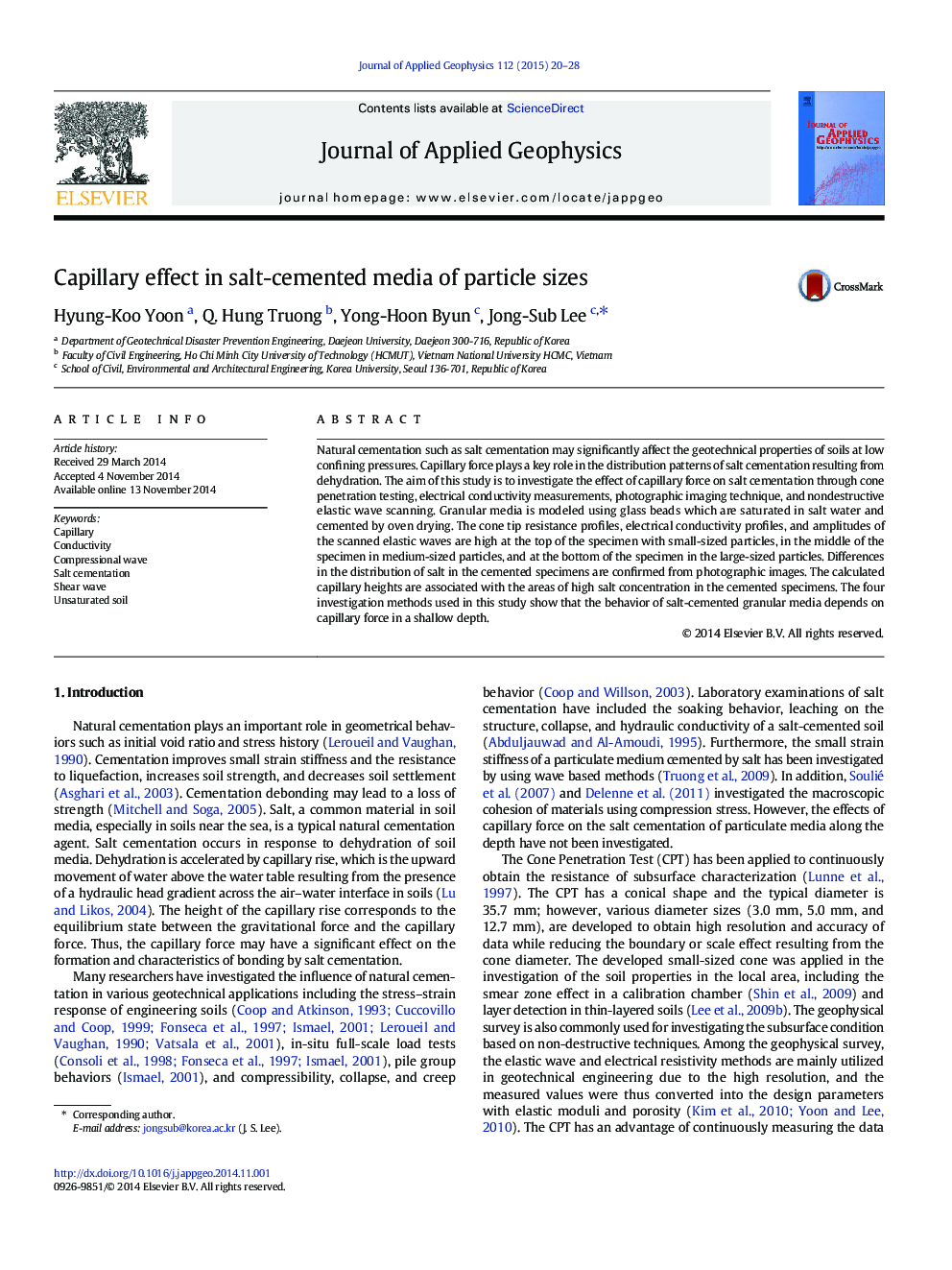| Article ID | Journal | Published Year | Pages | File Type |
|---|---|---|---|---|
| 4739994 | Journal of Applied Geophysics | 2015 | 9 Pages |
•Capillary force plays a key role in salt cementation resulting from dehydration.•The effect of the capillary force is investigated using four techniques.•The measured values show the distribution of salt minerals in the specimen.•The observed results are similar to the theoretically determined capillary rise.
Natural cementation such as salt cementation may significantly affect the geotechnical properties of soils at low confining pressures. Capillary force plays a key role in the distribution patterns of salt cementation resulting from dehydration. The aim of this study is to investigate the effect of capillary force on salt cementation through cone penetration testing, electrical conductivity measurements, photographic imaging technique, and nondestructive elastic wave scanning. Granular media is modeled using glass beads which are saturated in salt water and cemented by oven drying. The cone tip resistance profiles, electrical conductivity profiles, and amplitudes of the scanned elastic waves are high at the top of the specimen with small-sized particles, in the middle of the specimen in medium-sized particles, and at the bottom of the specimen in the large-sized particles. Differences in the distribution of salt in the cemented specimens are confirmed from photographic images. The calculated capillary heights are associated with the areas of high salt concentration in the cemented specimens. The four investigation methods used in this study show that the behavior of salt-cemented granular media depends on capillary force in a shallow depth.
